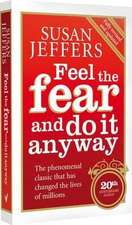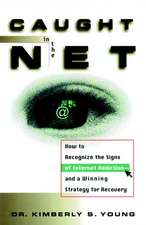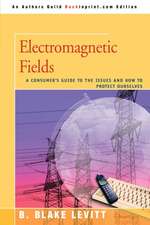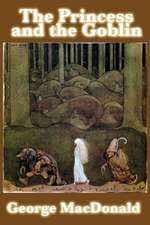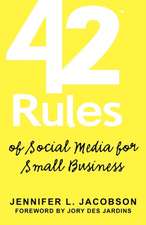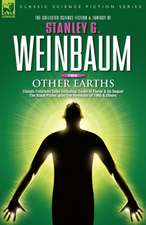The Cult of the Amateur
Autor Andrew Keenen Limba Engleză Paperback – 19 sep 2002
| Toate formatele și edițiile | Preț | Express |
|---|---|---|
| Paperback (2) | 53.21 lei 3-5 săpt. | |
| John Murray Press – 19 sep 2002 | 53.21 lei 3-5 săpt. | |
| Broadway Business – 30 apr 2008 | 86.16 lei 3-5 săpt. |
Preț: 53.21 lei
Preț vechi: 87.74 lei
-39% Nou
Puncte Express: 80
Preț estimativ în valută:
10.18€ • 10.63$ • 8.41£
10.18€ • 10.63$ • 8.41£
Carte disponibilă
Livrare economică 26 martie-09 aprilie
Preluare comenzi: 021 569.72.76
Specificații
ISBN-13: 9781857885200
ISBN-10: 1857885201
Pagini: 272
Dimensiuni: 128 x 198 x 22 mm
Greutate: 0.26 kg
Ediția:2 ed
Editura: John Murray Press
Locul publicării:United Kingdom
ISBN-10: 1857885201
Pagini: 272
Dimensiuni: 128 x 198 x 22 mm
Greutate: 0.26 kg
Ediția:2 ed
Editura: John Murray Press
Locul publicării:United Kingdom
Notă biografică
ANDREW KEEN is a Silicon Valley entrepreneur whose writings on culture, media, and technology have appeared in The Weekly Standard, Fast Company, The San Francisco Chronicle, Listener, and Jazziz. As the Founder, President and CEO of Audiocafe.com, he has been featured in Esquire, Industry Standard, and many other magazines and newspapers. He is the host of the acclaimed Internet show AfterTV and frequently appears on radio and television. He lives in Berkeley, California.
Extras
1
The Great Seduction
First a confession. Back in the Nineties, I was a pioneer in the first Internet gold rush. With the dream of making the world a more musical place, I founded Audiocafe.com, one of the earliest digital music sites. Once, when asked by a San Francisco Bay area newspaper reporter how I wanted to change the world, I replied, half seriously, that my fantasy was to have music playing from “every orifice,” to hear the whole Bob Dylan oeuvre from my laptop computer, to be able to download Johann Sebastian Bach’s Brandenburg Concertos from my cellular phone.
So yes, I peddled the original Internet dream. I seduced investors and I almost became rich. This, therefore, is no ordinary critique of Silicon Valley. It’s the work of an apostate, an insider now on the outside who has poured out his cup of Kool–Aid and resigned his membership in the cult.
My metamorphosis from believer into skeptic lacks cinematic drama. I didn’t break down while reading an incorrect Wikipedia entry about T. H. Huxley or get struck by lightning while doing a search for myself on Google. My epiphany didn’t involve a dancing coyote, so it probably wouldn’t be a hit on YouTube.
It took place over forty–eight hours, in September 2004, on a two–day camping trip with a couple of hundred Silicon Valley utopians. Sleeping bag under my arm, rucksack on my back, I marched into camp a member of the cult; two days later, feeling queasy, I left an unbeliever.
The camping trip took place in Sebastopol, a small farming town in northern California’s Sonoma Valley, about fifty miles north of the infamous Silicon Valley—the narrow peninsula of land between San Francisco and San Jose. Sebastopol is the headquarters of O’Reilly Media, one of the world’s leading traffickers of books, magazines, and trade shows about information technology, an evangelizer of innovation to a worldwide congregation of technophiles. It is both Silicon Valley’s most fervent preacher and its noisiest chorus.
Each Fall, O’Reilly Media hosts an exclusive, invitation–only event called FOO (Friends of O’Reilly) Camp. These friends of multi–millionaire founder Tim O’Reilly are not only unconventionally rich and richly unconventional but also harbor a messianic faith in the economic the cult of the amateur and cultural benefits of technology. O’Reilly and his Silicon Valley acolytes are a mix of graying hippies, new media entrepreneurs, and technology geeks. What unites them is a shared hostility toward traditional media and entertainment. Part Woodstock, part Burning Man (the contemporary festival of self-expression held in a desert in Nevada), and part Stanford Business School retreat, FOO Camp is where the countercultural Sixties meets the free–market Eighties meets the technophile Nineties.
Silicon Valley conferences weren’t new to me. I had even organized one myself at the tail end of the last Internet boom. But FOO Camp was radically different. Its only rule was an unrule: “no spectators, only participants.” The camp was run on open-source, Wikipediastyle participatory principles—which meant that everyone talked a lot, and there was no one in charge.
So there we were, two hundred of us, Silicon Valley’s antiestablishment establishment, collectively worth hundreds of millions of dollars, gazing at the stars from the lawn of O’Reilly Media’s corporate headquarters. For two full days, we camped together, roasted marshmallows together, and celebrated the revival of our cult together.
The Internet was back! And unlike the Gold Rush Nineties, this time around our exuberance wasn’t irrational. This shiny new version of the Internet, what Tim O’Reilly called Web 2.0, really was going to change everything. Now that most Americans had broadband access to the Internet, the dream of a fully networked, always-connected society was finally going to be realized. There was one word on every FOO Camper’s lips in September 2004. That word was “democratization.”
I never realized democracy has so many possibilities, so much revolutionary potential. Media, information, knowledge, content, audience, author–all were going to be democratized by Web 2.0. The Internet would democratize Big Media, Big Business, Big Government. It would even democratize Big Experts, transforming them into what one friend of O’Reilly called, in a hushed, reverent tone, “noble amateurs.”
Although Sebastopol was miles from the ocean, by the second morning of camp, I had begun to feel seasick. At first I thought it was the greasy camp food or perhaps the hot northern California weather. But I soon realized that even my gut was reacting to the emptiness at the heart of our conversation.
I had come to FOO Camp to imagine the future of media. I wanted to know how the Internet could help me “bring more music to more orifices.” But my dream of making the world a more musical place had fallen on deaf ears; the promise of using technology to bring more culture to the masses had been drowned out by FOO Campers’ collective cry for a democratized media.
The new Internet was about self-made music, not Bob Dylan or the Brandenburg Concertos. Audience and author had become one, and we were transforming culture into cacophony.
FOO Camp, I realized, was a sneak preview. We weren’t there just to talk about new media; we were the new media. The event was a beta version of the Web 2.0 revolution, where Wikipedia met MySpace met YouTube. Everyone was simultaneously broadcasting themselves, but nobody was listening. Out of this anarchy, it suddenly became clear that what was governing the infinite monkeys now inputting away on the Internet was the law of digital Darwinism, the survival of the loudest and most opinionated. Under these rules, the only way to intellectually prevail is by infinite filibustering.
The more that was said that weekend, the less I wanted to express myself. As the din of narcissism swelled, I became increasingly silent. And thus began my rebellion against Silicon Valley. Instead of adding to the noise, I broke the one law of FOO Camp 2004. I stopped participating and sat back and watched.
I haven’t stopped watching since. I’ve spent the last two years observing the Web 2.0 revolution, and I’m dismayed by what I’ve seen.
I’ve seen the infinite monkeys, of course, typing away.
And I’ve seen many other strange sights as well, including a video of marching penguins selling a lie, a supposedly infinite Long Tail, and dogs chatting to each other online. But what I’ve been watching is more like Hitchcock’s The Birds than Doctor Doolittle: a horror movie about the consequences of the digital revolution.
Because democratization, despite its lofty idealization, is undermining truth, souring civic discourse, and belittling expertise, experience, and talent. As I noted earlier, it is threatening the very future of our cultural institutions.
I call it the great seduction. The Web 2.0 revolution has peddled the promise of bringing more truth to more people–more depth of information, more global perspective, more unbiased opinion from dispassionate observers. But this is all a smokescreen. What the Web 2.0 revolution is really delivering is superficial observations of the world around us rather than deep analysis, shrill opinion rather than considered judgment. The information business is being transformed by the Internet into the sheer noise of a hundred million bloggers all simultaneously talking about themselves.
Moreover, the free, user-generated content spawned and extolled by the Web 2.0 revolution is decimating the ranks of our cultural gatekeepers, as professional critics, journalists, editors, musicians, moviemakers, and other purveyors of expert information are being replaced (“disintermediated,” to use a FOO Camp term) by amateur bloggers, hack reviewers, homespun moviemakers, and attic recording artists. Meanwhile, the radically new business models based on user-generated material suck the economic value out of traditional media and cultural content.
We—those of us who want to know more about the world, those of us who are the consumers of mainstream culture—are being seduced by the empty promise of the “democratized” media. For the real consequence of the Web 2.0 revolution is less culture, less reliable news, and a chaos of useless information. One chilling reality in this brave new digital epoch is the blurring, obfuscation, and even disappearance of truth.
Truth, to paraphrase Tom Friedman, is being “flattened,” as we create an on–demand, personalized version that reflects our own individual myopia. One person’s truth becomes as “true” as anyone else’s. Today’s media is shattering the world into a billion personalized truths, each seemingly equally valid and worthwhile. To quote Richard Edelman, the founder, president, and CEO of Edelman PR, the world’s largest privately owned public relations company:
In this era of exploding media technologies there is no truth except the truth you create for yourself. (1)
This undermining of truth is threatening the quality of civil public discourse, encouraging plagiarism and intellectual property theft, and stifling creativity. When advertising and public relations are disguised as news, the line between fact and fiction becomes blurred. Instead of more community, knowledge, or culture, all that Web 2.0 really delivers is more dubious content from anonymous sources, hijacking our time and playing to our gullibility.
Need proof ? Let’s look at that army of perjurious penguins–“Al Gore’s Army of Penguins” to be exact. Featured on YouTube, the film, a crude “self-made” satire of Gore’s pro–environment movie An Inconvenient Truth, belittles the seriousness of Al Gore’s message by depicting a penguin version of Al Gore preaching to other penguins about global warning.
But “Al Gore’s Army of Penguins” is not just another homemade example of YouTube inanity. Though many of the 120,000 people who viewed this video undoubtedly assumed it was the work of some SUV–driving amateur with an aversion to recycling, in reality, the Wall Street Journal traced the real authorship of this neocon satire to DCI Group, a conservative Washington, D.C., public relationships and lobbying firm whose clients include Exxon-Mobil.2 The video is nothing more than political spin, enabled and perpetuated by the anonymity of Web 2.0, masquerading as independent art. In short, it is a big lie.
Blogs too, can be vehicles for veiled corporate propaganda and deception. In March 2006, the New York Times reported about a blogger whose laudatory postings about Wal–Mart were “identical” to press releases written by a senior account supervisor at the Arkansas retailer’s PR company. (3) Perhaps this is the same team behind the mysterious elimination of unflattering remarks about Wal–Mart’s treatment of its employees on the retailer’s Wikipedia entry.
Blogs are increasingly becoming the battlefield on which public relations spin doctors are waging their propaganda war. In 2005, before launching a major investment, General Electric executives met with environmental bloggers to woo them over the greenness of a new energy–efficient technology. Meanwhile, multinationals like IBM, Maytag, and General Motors all have blogs that, under an objective guise, peddle their versions of corporate truth to the outside world.
But the anticorporate blogs are equally loose with the truth. In 2005, when the famous and fictitious finger–in–the–chili story broke, every anti–Wendy’s blogger jumped on it as evidence of fast–food malfeasance. The bogus story cost Wendy’s $2.5 million in lost sales as well as job losses and a decline in the price of the company’s stock.
As former British Prime Minister James Callaghan said, “A lie can make its way around the world before the truth has the chance to put its boots on.” That has never been more true than with the speeding, freewheeling, unchecked culture of today’s blogosphere. It doesn’t require the gravitas of a world leader to appreciate the implications of this democratized media. In a flattened, editor–free world where independent videographers,
podcasters, and bloggers can post their amateurish creations at will, and no one is being paid to check their credentials or evaluate their material, media is vulnerable to untrustworthy content of every stripe—whether from duplicitous PR companies, multinational corporations like Wal–Mart and McDonald’s, anonymous bloggers, or sexual predators with sophisticated invented identities.
Who is to say, for example, that a Malaysian prostitution ring didn’t sponsor the famous YouTube video of the sexy Malaysian dancer? Or that the Englishwoman in the YouTube video eating the chocolate and marmalade cookie isn’t really being paid by United Biscuits Incorporated?
Who is to say that the glowing review of The Cult of the Amateur on Amazon.com that might have led you to purchase this “brilliantly original” book wasn’t authored by me, posing as an enthusiastic third party?
As I’ll discuss in more detail in Chapter 3, truth and trust are the whipping boys of the Web 2.0 revolution. In a world with fewer and fewer professional editors or reviewers, how are we to know what and whom to believe? Because much of the user–generated content on the Internet is posted anonymously or under a pseudonym, nobody knows who the real author of much of this self-generated content actually is. It could be a monkey. It could be a penguin. It could even be Al Gore.
Look at Wikipedia, the Internet’s largest cathedral of knowledge. Unlike editors at a professional encyclopedia like the Britannica, the identity of the volunteer editors on Wikipedia is unknown. These citizen editors out-edit other citizen editors in defining, redefining, then reredefining truth, sometimes hundreds of times a day. Take, for example, July 5, 2006, the day Enron embezzler Ken Lay died. At 10:06 A.M. that day, the Wikipedia entry about Lay said he died of an “apparent suicide.” Two minutes later, it said that the cause of death was an “apparent heart attack.” Then at 10:11 A.M., Wikipedia reported that the “guilt of ruining so many lives finally led him to his suicide.”4 At 10:12, we were back to the massive coronary causing Lay’s demise. And in February 2007, just minutes after ex-Playboy Playmate Anna Nicole Smith died in Florida, her Wikipedia page was flooded with conflicting, speculative versions of the cause of death. As Marshall Poe observed in the September 2006 issue of the Atlantic:
We tend to think of truth as something that resides in the world. The fact that two plus two equals four is written in the stars…But Wikipedia suggests a different theory of truth. Just think about the way we learn what words mean…The community decides that two plus two equals four the same way it decides what an apple is: by consensus. Yes, that means that if the community changes its mind and decides that two plus two equals five, then two plus two does equal five. The community isn’t likely to do such an absurd or useless thing, but it has the ability. (5)
In Orwell’s Nineteen Eighty-Four, Big Brother insisted that two plus two equaled five, transforming a patently incorrect statement into the state–sanctioned, official truth. Today, as I discuss in Chapter 7, there is potentially an even more threatening Big Brother lurking in the shadows: the search engine. We pour our innermost secrets into the all–powerful search engine through the tens of millions of questions we enter daily. Search engines like Google know more about our habits, our interests, our desires than our friends, our loved ones, and our shrink combined. But unlike in Nineteen Eighty–Four, this Big Brother is very much for real. We have to trust it not to spill our secrets–a trust, as we will see, that has repeatedly been betrayed.
From the Hardcover edition.
The Great Seduction
First a confession. Back in the Nineties, I was a pioneer in the first Internet gold rush. With the dream of making the world a more musical place, I founded Audiocafe.com, one of the earliest digital music sites. Once, when asked by a San Francisco Bay area newspaper reporter how I wanted to change the world, I replied, half seriously, that my fantasy was to have music playing from “every orifice,” to hear the whole Bob Dylan oeuvre from my laptop computer, to be able to download Johann Sebastian Bach’s Brandenburg Concertos from my cellular phone.
So yes, I peddled the original Internet dream. I seduced investors and I almost became rich. This, therefore, is no ordinary critique of Silicon Valley. It’s the work of an apostate, an insider now on the outside who has poured out his cup of Kool–Aid and resigned his membership in the cult.
My metamorphosis from believer into skeptic lacks cinematic drama. I didn’t break down while reading an incorrect Wikipedia entry about T. H. Huxley or get struck by lightning while doing a search for myself on Google. My epiphany didn’t involve a dancing coyote, so it probably wouldn’t be a hit on YouTube.
It took place over forty–eight hours, in September 2004, on a two–day camping trip with a couple of hundred Silicon Valley utopians. Sleeping bag under my arm, rucksack on my back, I marched into camp a member of the cult; two days later, feeling queasy, I left an unbeliever.
The camping trip took place in Sebastopol, a small farming town in northern California’s Sonoma Valley, about fifty miles north of the infamous Silicon Valley—the narrow peninsula of land between San Francisco and San Jose. Sebastopol is the headquarters of O’Reilly Media, one of the world’s leading traffickers of books, magazines, and trade shows about information technology, an evangelizer of innovation to a worldwide congregation of technophiles. It is both Silicon Valley’s most fervent preacher and its noisiest chorus.
Each Fall, O’Reilly Media hosts an exclusive, invitation–only event called FOO (Friends of O’Reilly) Camp. These friends of multi–millionaire founder Tim O’Reilly are not only unconventionally rich and richly unconventional but also harbor a messianic faith in the economic the cult of the amateur and cultural benefits of technology. O’Reilly and his Silicon Valley acolytes are a mix of graying hippies, new media entrepreneurs, and technology geeks. What unites them is a shared hostility toward traditional media and entertainment. Part Woodstock, part Burning Man (the contemporary festival of self-expression held in a desert in Nevada), and part Stanford Business School retreat, FOO Camp is where the countercultural Sixties meets the free–market Eighties meets the technophile Nineties.
Silicon Valley conferences weren’t new to me. I had even organized one myself at the tail end of the last Internet boom. But FOO Camp was radically different. Its only rule was an unrule: “no spectators, only participants.” The camp was run on open-source, Wikipediastyle participatory principles—which meant that everyone talked a lot, and there was no one in charge.
So there we were, two hundred of us, Silicon Valley’s antiestablishment establishment, collectively worth hundreds of millions of dollars, gazing at the stars from the lawn of O’Reilly Media’s corporate headquarters. For two full days, we camped together, roasted marshmallows together, and celebrated the revival of our cult together.
The Internet was back! And unlike the Gold Rush Nineties, this time around our exuberance wasn’t irrational. This shiny new version of the Internet, what Tim O’Reilly called Web 2.0, really was going to change everything. Now that most Americans had broadband access to the Internet, the dream of a fully networked, always-connected society was finally going to be realized. There was one word on every FOO Camper’s lips in September 2004. That word was “democratization.”
I never realized democracy has so many possibilities, so much revolutionary potential. Media, information, knowledge, content, audience, author–all were going to be democratized by Web 2.0. The Internet would democratize Big Media, Big Business, Big Government. It would even democratize Big Experts, transforming them into what one friend of O’Reilly called, in a hushed, reverent tone, “noble amateurs.”
Although Sebastopol was miles from the ocean, by the second morning of camp, I had begun to feel seasick. At first I thought it was the greasy camp food or perhaps the hot northern California weather. But I soon realized that even my gut was reacting to the emptiness at the heart of our conversation.
I had come to FOO Camp to imagine the future of media. I wanted to know how the Internet could help me “bring more music to more orifices.” But my dream of making the world a more musical place had fallen on deaf ears; the promise of using technology to bring more culture to the masses had been drowned out by FOO Campers’ collective cry for a democratized media.
The new Internet was about self-made music, not Bob Dylan or the Brandenburg Concertos. Audience and author had become one, and we were transforming culture into cacophony.
FOO Camp, I realized, was a sneak preview. We weren’t there just to talk about new media; we were the new media. The event was a beta version of the Web 2.0 revolution, where Wikipedia met MySpace met YouTube. Everyone was simultaneously broadcasting themselves, but nobody was listening. Out of this anarchy, it suddenly became clear that what was governing the infinite monkeys now inputting away on the Internet was the law of digital Darwinism, the survival of the loudest and most opinionated. Under these rules, the only way to intellectually prevail is by infinite filibustering.
The more that was said that weekend, the less I wanted to express myself. As the din of narcissism swelled, I became increasingly silent. And thus began my rebellion against Silicon Valley. Instead of adding to the noise, I broke the one law of FOO Camp 2004. I stopped participating and sat back and watched.
I haven’t stopped watching since. I’ve spent the last two years observing the Web 2.0 revolution, and I’m dismayed by what I’ve seen.
I’ve seen the infinite monkeys, of course, typing away.
And I’ve seen many other strange sights as well, including a video of marching penguins selling a lie, a supposedly infinite Long Tail, and dogs chatting to each other online. But what I’ve been watching is more like Hitchcock’s The Birds than Doctor Doolittle: a horror movie about the consequences of the digital revolution.
Because democratization, despite its lofty idealization, is undermining truth, souring civic discourse, and belittling expertise, experience, and talent. As I noted earlier, it is threatening the very future of our cultural institutions.
I call it the great seduction. The Web 2.0 revolution has peddled the promise of bringing more truth to more people–more depth of information, more global perspective, more unbiased opinion from dispassionate observers. But this is all a smokescreen. What the Web 2.0 revolution is really delivering is superficial observations of the world around us rather than deep analysis, shrill opinion rather than considered judgment. The information business is being transformed by the Internet into the sheer noise of a hundred million bloggers all simultaneously talking about themselves.
Moreover, the free, user-generated content spawned and extolled by the Web 2.0 revolution is decimating the ranks of our cultural gatekeepers, as professional critics, journalists, editors, musicians, moviemakers, and other purveyors of expert information are being replaced (“disintermediated,” to use a FOO Camp term) by amateur bloggers, hack reviewers, homespun moviemakers, and attic recording artists. Meanwhile, the radically new business models based on user-generated material suck the economic value out of traditional media and cultural content.
We—those of us who want to know more about the world, those of us who are the consumers of mainstream culture—are being seduced by the empty promise of the “democratized” media. For the real consequence of the Web 2.0 revolution is less culture, less reliable news, and a chaos of useless information. One chilling reality in this brave new digital epoch is the blurring, obfuscation, and even disappearance of truth.
Truth, to paraphrase Tom Friedman, is being “flattened,” as we create an on–demand, personalized version that reflects our own individual myopia. One person’s truth becomes as “true” as anyone else’s. Today’s media is shattering the world into a billion personalized truths, each seemingly equally valid and worthwhile. To quote Richard Edelman, the founder, president, and CEO of Edelman PR, the world’s largest privately owned public relations company:
In this era of exploding media technologies there is no truth except the truth you create for yourself. (1)
This undermining of truth is threatening the quality of civil public discourse, encouraging plagiarism and intellectual property theft, and stifling creativity. When advertising and public relations are disguised as news, the line between fact and fiction becomes blurred. Instead of more community, knowledge, or culture, all that Web 2.0 really delivers is more dubious content from anonymous sources, hijacking our time and playing to our gullibility.
Need proof ? Let’s look at that army of perjurious penguins–“Al Gore’s Army of Penguins” to be exact. Featured on YouTube, the film, a crude “self-made” satire of Gore’s pro–environment movie An Inconvenient Truth, belittles the seriousness of Al Gore’s message by depicting a penguin version of Al Gore preaching to other penguins about global warning.
But “Al Gore’s Army of Penguins” is not just another homemade example of YouTube inanity. Though many of the 120,000 people who viewed this video undoubtedly assumed it was the work of some SUV–driving amateur with an aversion to recycling, in reality, the Wall Street Journal traced the real authorship of this neocon satire to DCI Group, a conservative Washington, D.C., public relationships and lobbying firm whose clients include Exxon-Mobil.2 The video is nothing more than political spin, enabled and perpetuated by the anonymity of Web 2.0, masquerading as independent art. In short, it is a big lie.
Blogs too, can be vehicles for veiled corporate propaganda and deception. In March 2006, the New York Times reported about a blogger whose laudatory postings about Wal–Mart were “identical” to press releases written by a senior account supervisor at the Arkansas retailer’s PR company. (3) Perhaps this is the same team behind the mysterious elimination of unflattering remarks about Wal–Mart’s treatment of its employees on the retailer’s Wikipedia entry.
Blogs are increasingly becoming the battlefield on which public relations spin doctors are waging their propaganda war. In 2005, before launching a major investment, General Electric executives met with environmental bloggers to woo them over the greenness of a new energy–efficient technology. Meanwhile, multinationals like IBM, Maytag, and General Motors all have blogs that, under an objective guise, peddle their versions of corporate truth to the outside world.
But the anticorporate blogs are equally loose with the truth. In 2005, when the famous and fictitious finger–in–the–chili story broke, every anti–Wendy’s blogger jumped on it as evidence of fast–food malfeasance. The bogus story cost Wendy’s $2.5 million in lost sales as well as job losses and a decline in the price of the company’s stock.
As former British Prime Minister James Callaghan said, “A lie can make its way around the world before the truth has the chance to put its boots on.” That has never been more true than with the speeding, freewheeling, unchecked culture of today’s blogosphere. It doesn’t require the gravitas of a world leader to appreciate the implications of this democratized media. In a flattened, editor–free world where independent videographers,
podcasters, and bloggers can post their amateurish creations at will, and no one is being paid to check their credentials or evaluate their material, media is vulnerable to untrustworthy content of every stripe—whether from duplicitous PR companies, multinational corporations like Wal–Mart and McDonald’s, anonymous bloggers, or sexual predators with sophisticated invented identities.
Who is to say, for example, that a Malaysian prostitution ring didn’t sponsor the famous YouTube video of the sexy Malaysian dancer? Or that the Englishwoman in the YouTube video eating the chocolate and marmalade cookie isn’t really being paid by United Biscuits Incorporated?
Who is to say that the glowing review of The Cult of the Amateur on Amazon.com that might have led you to purchase this “brilliantly original” book wasn’t authored by me, posing as an enthusiastic third party?
As I’ll discuss in more detail in Chapter 3, truth and trust are the whipping boys of the Web 2.0 revolution. In a world with fewer and fewer professional editors or reviewers, how are we to know what and whom to believe? Because much of the user–generated content on the Internet is posted anonymously or under a pseudonym, nobody knows who the real author of much of this self-generated content actually is. It could be a monkey. It could be a penguin. It could even be Al Gore.
Look at Wikipedia, the Internet’s largest cathedral of knowledge. Unlike editors at a professional encyclopedia like the Britannica, the identity of the volunteer editors on Wikipedia is unknown. These citizen editors out-edit other citizen editors in defining, redefining, then reredefining truth, sometimes hundreds of times a day. Take, for example, July 5, 2006, the day Enron embezzler Ken Lay died. At 10:06 A.M. that day, the Wikipedia entry about Lay said he died of an “apparent suicide.” Two minutes later, it said that the cause of death was an “apparent heart attack.” Then at 10:11 A.M., Wikipedia reported that the “guilt of ruining so many lives finally led him to his suicide.”4 At 10:12, we were back to the massive coronary causing Lay’s demise. And in February 2007, just minutes after ex-Playboy Playmate Anna Nicole Smith died in Florida, her Wikipedia page was flooded with conflicting, speculative versions of the cause of death. As Marshall Poe observed in the September 2006 issue of the Atlantic:
We tend to think of truth as something that resides in the world. The fact that two plus two equals four is written in the stars…But Wikipedia suggests a different theory of truth. Just think about the way we learn what words mean…The community decides that two plus two equals four the same way it decides what an apple is: by consensus. Yes, that means that if the community changes its mind and decides that two plus two equals five, then two plus two does equal five. The community isn’t likely to do such an absurd or useless thing, but it has the ability. (5)
In Orwell’s Nineteen Eighty-Four, Big Brother insisted that two plus two equaled five, transforming a patently incorrect statement into the state–sanctioned, official truth. Today, as I discuss in Chapter 7, there is potentially an even more threatening Big Brother lurking in the shadows: the search engine. We pour our innermost secrets into the all–powerful search engine through the tens of millions of questions we enter daily. Search engines like Google know more about our habits, our interests, our desires than our friends, our loved ones, and our shrink combined. But unlike in Nineteen Eighty–Four, this Big Brother is very much for real. We have to trust it not to spill our secrets–a trust, as we will see, that has repeatedly been betrayed.
From the Hardcover edition.
Recenzii
“A powerful, provocative, and beautifully written stop-and-breathe book in the midst of the greatest paradigm shift in information and communications history.”
—Christopher M. Schroeder, CEO, HealthCentral Network (healthcentral.com), and former CEO and publisher, Washingtonpost.Newsweek Interactive
“Page after page of really interesting insight and research. I look forward to the much-needed debate about the problems that Keen articulates—which can’t be lightly dismissed.”
—Larry Sanger, cofounder, Wikipedia and founder, Citizendium
“Thoroughly engaging, brightly written pages”
—Chicago Tribune
“Andrew Keen is a brilliant, witty, classically educated technoscold—and thank goodness. The world needs an intellectual Goliath to slay Web 2.0’s army of Davids.”
—Jonathan Last, online editor, Weekly Standard
—Christopher M. Schroeder, CEO, HealthCentral Network (healthcentral.com), and former CEO and publisher, Washingtonpost.Newsweek Interactive
“Page after page of really interesting insight and research. I look forward to the much-needed debate about the problems that Keen articulates—which can’t be lightly dismissed.”
—Larry Sanger, cofounder, Wikipedia and founder, Citizendium
“Thoroughly engaging, brightly written pages”
—Chicago Tribune
“Andrew Keen is a brilliant, witty, classically educated technoscold—and thank goodness. The world needs an intellectual Goliath to slay Web 2.0’s army of Davids.”
—Jonathan Last, online editor, Weekly Standard

